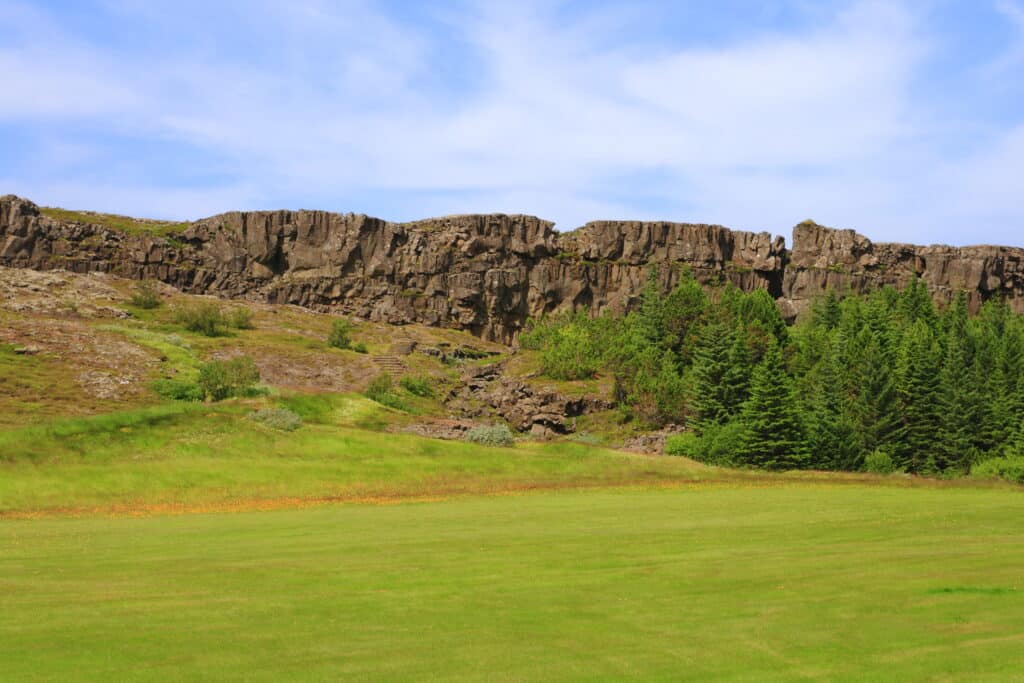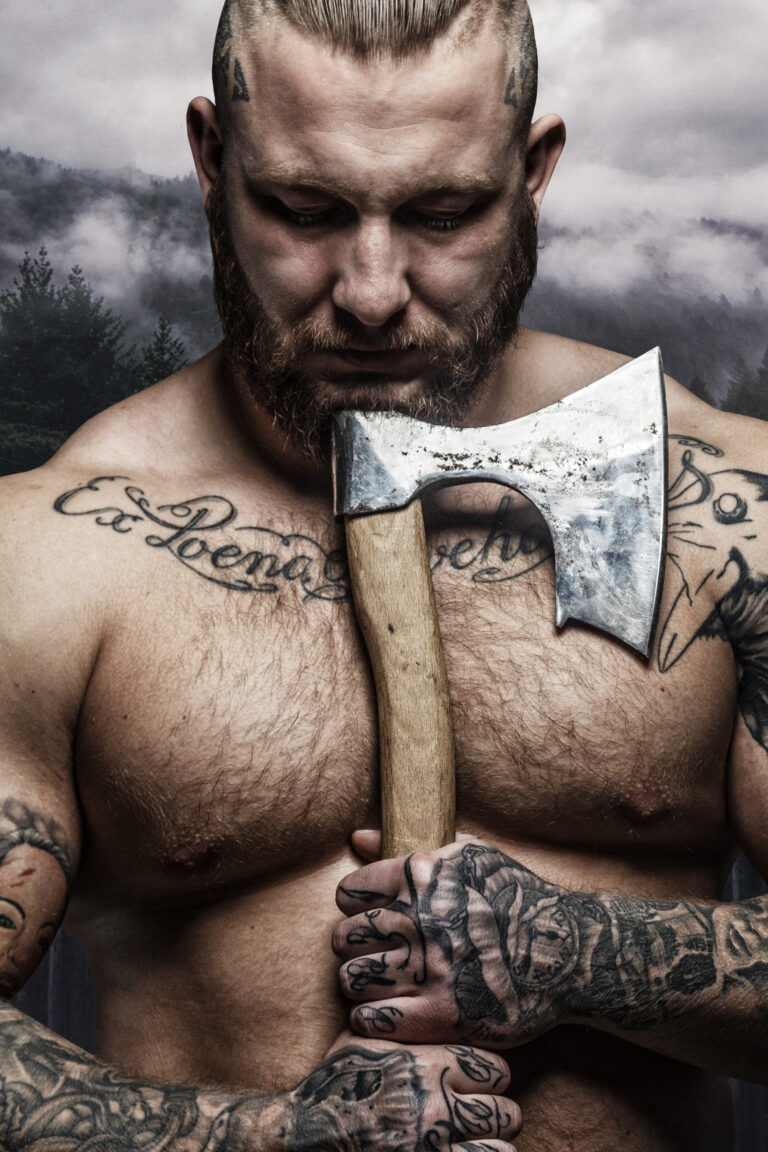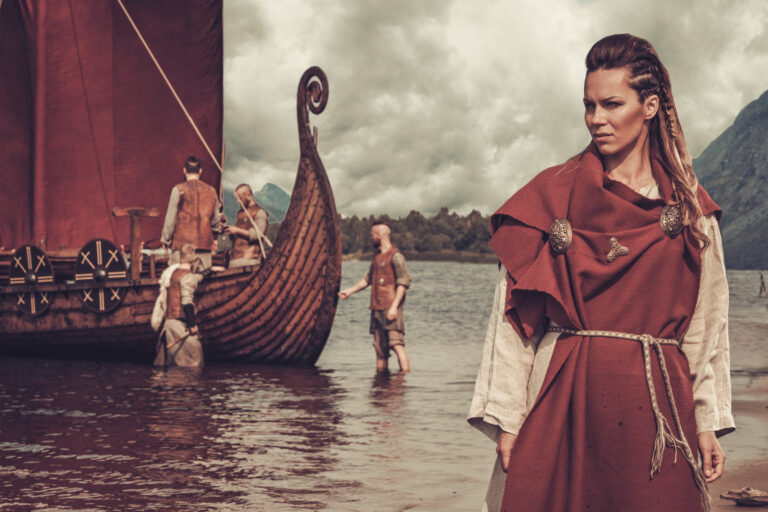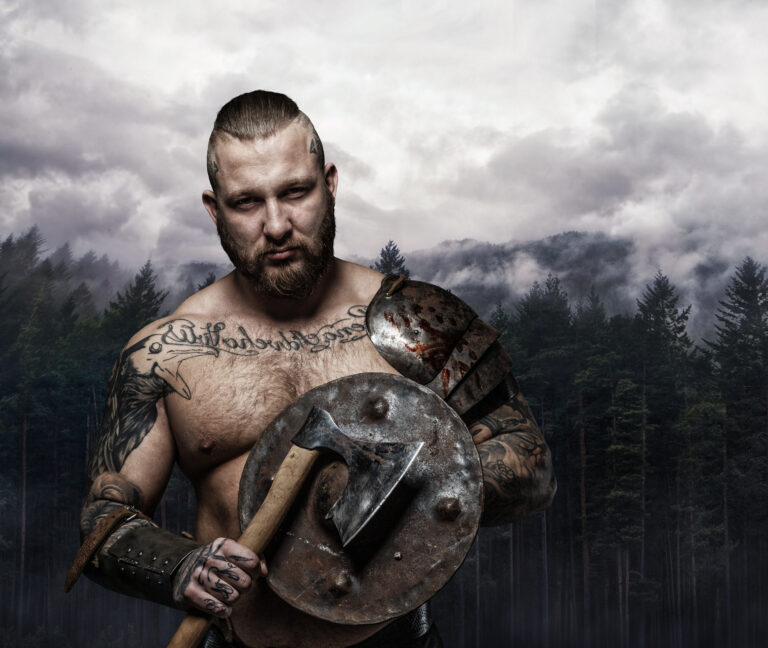Viking Laws – Outlawry, Blood feuds, and Open-air Assemblies
The Viking Age is certainly one that brings to mind images of violence, battles, warring, and lawlessness. But this is not a fair representation of the society. Viking laws were established an upheld in Viking Age Scandinavia. While laws were not actually written down and recorded until the twelfth century, ongoing interdisciplinary studies continue to show us that laws were developed and implemented centuries before they were recorded. Here we are going to look at the importance of the main viking laws in Scandinavia. We will look at how they were dictated, and enforced within society. We will also look at how these viking laws resulted in outlawry, blood feuds, and open-air assemblies.

Open-Air Assemblies
The photo above shows the continental divide in Thingvellir National Park, Iceland. For more on the vikings in Iceland, check out this post! This is the geographical area where the open-air assemblies took place. You can imagine hundreds, or thousands of people setting up camps on the fields below. Here a law speaker would use the natural acoustics of the rock to project sound back on the crowd. Here they would stand and interpret the law for the nordic people.
The beginnings of a legal code
So in Old Norse (which was the language of the vikings) there is a viking word lǫg. It sounds a lot like “law”, I know. We have borrowed a lot of words from Old Norse. This would actually referred to a loosely identified group of rules that governed a particular area. It was also used to identify an area, or region, that ascribed to the same rules. The vikings were clearly familiar with laws and legal structures by the time they began raiding.
In foreign lands, we see evidence of this in the Danelaw. During their raids on England, a viking king made a treaty with the English king. They agreed to govern over a piece of land that would be considered Scandinavian. It would fall under Danelaw, and not that of England. This is actually a pretty complex legal agreement to come to roughly a millennia ago. During the formation of this treaty, both sides also agreed to sanctions, agreements, trades, oath-taking, and clearly both walked away with benefits. I’d like to think they did this over a horn of mead.

Changing Perspectives
This sort of changes the narrative we get handed down that focuses almost entirely on berserkers and raids, and pillaging. The vikings are less often thought of for their complex legal proceedings. The laws in the viking age were actually well developed. The most common punishment handed down wasn’t the blood eagle, or some fancy dismemberment we might see on television, or in a film. It was simply “outlawry”. This meant that the person was now outside of the law. Therefore they would no longer be protected by it. This is sometimes understood to mean that anyone could now just go attack and kill them, and there would be no vengeance for the action. That is kind of true.
Law in the Sagas
With no written form of a law code in the Pagan period (none that survives anyway), we learn of how laws were enforced mainly through the Sagas. In the Family Sagas (the body of literature that speaks more to the fantastical and mythological pagan past), we read of peace agreements that were upheld between families through the honor based blood feuds. If a free man was murdered his family was entitled to seek revenge for the murder by implementing a blood feud. This meant the family could choose to kill a member of the other family in a sort of “eye for an eye” situation. It could also be agreed upon to accept compensation for the murder. Norse law was simply understood by a social group that acted like a bit of a legislative assembly when they met during their quarter courts to discuss legal procedures.

Now, the tricky part is understanding what laws existed during the Pagan period, when viking society believed in the old Gods. The laws were not written down until after the period of conversion, which would have been through a Christian lens. However, the family sagas, Poetic Edda, and Prose Edda, written by the infamous Snorri, actually give hints of law and structure in the stories of the gods in Asgard. This could mean that the set of laws that existed in the pre-Christian period were maintained through their oral culture, and written into the saga literature in the twelfth and thirteen centuries. It appears that the Gods were actually participants in the law. They were also subject to it. This gives us another indication that law and structure was extremely important and respected in the viking world.
Poetic Edda
The first poem in the Poetic Edda is the Vǫluspá. This is an account by a seeress (for more information about who the seeress was in viking society go check out a brief mention of the Seeress in our post about cats in the viking world). So the seeress retells this story, and it is basically a poem about the the mythological world, their beings, the norse gods, and a chronological order of the pre-christian and mythical viking world. It also tells us how the Old Norse world entered law and order in its worldview.
In the retelling of the poem, we learn that the All Father, Odin, creates the mythological realm, along with his brothers. Upon doing do, they notice that there are multiple housekeeping tasks that now need to be managed. In Vǫluspá, they all retire to their røkstólar, which literally translates as “judgement seats” and they begin to ponder how they will rule over this realm. Their assembly of thought resembles the viking þing (thing), the open air assemblies that were a centralized form of government during the viking period.
If you want to more about Odin you can check out a post on his mythical ravins Huginn and Muninn, or on his Spear, Gungnir.
So clearly there is likely to be influence of the everyday practices written into the literature. We can use this to make the assumption that law and order were important parts of viking society.

Law in the Real World
These open air assemblies are well documented in the real world. In Gamla Uppsala the mounds where their þing (thing) was held are still visible today. They offered meeting places where people could come to hear about the current system of law, political decisions, to ratify new laws, the have arguments heard by the injured party. We learn later from historical sources that the famous Snorri who wrote the Prose Edda was a law speaker at the Icelandic þing (thing).
Like the Uppsala site, the assembly at Þingvellir National Park still has visible evidence of the assembly. We hear of the law rock where the law speaker would stand and literally shout the laws to the crowd. This law rock is still visible, and I’ve actually visited this site multiple times in my life. On a side note, it is also a really cool part where the North American and Eurasian plates meet and a huge fault line is visible. You can literally stand with a foot on each continent in this park. For more about the vikings in Iceland, check out this discussion of the history of their geographical beginnings.
While women and unfree men could attend these local assemblies they were not allowed to speak or present a case. The law assemblies were for free men to voice their concerns to the local communities through a formal process.
Communal Sites for Social Gatherings
The Icelandic Sagas tell us that these legal sites were more than just assemblies to hear the law. They were communal sites where attendance was very important. Much like today, being seen could have lasting effects on your position in society. That is because these sites were also spots for sporting events, huge markets, community feasts, and even scared grounds and burial grounds. Archeological evidence supports the saga literature with digs showing evidence of the sites being multi-purpose for many generations. (If this is something you want to know more about then go check out this article which talks more about the open-air assemblies here.) If you want to hear more about these sites used for multi-purpose gatherings, check out my post on the viking mead hall.

The Grey Goose Laws
As Christianity swept across Scandinavia, we see new laws come into effect. This occured alongside the conversion to Christianity in 999AD or 1000AD. In Iceland these are recorded in the Gragas, or “Grey Goose Laws”. There is debate as to how many of these laws existed in the pre-Christian period. There are sections dedicated specially to the new religion. However, many of the other sections in the law books would have carried over legal traditions exiting from the pagan period.
Enforcing the Law
Viking. society had no political institutions to enforce the law. There was no viking swat team. The laws that were set down were more or less that agreed upon set of social norms that we mentioned above. Therefore, the public prosecutors were the general populous themselves. This more or less worked. This also meant that there were no formal sentences or executions, for crimes that the society would have deemed worthy of capital punishment. Instead they had what they called outlawry.
This literally meant the person now lives outside the law. Their property is no longer protected, they cannot be protected by the societal norms that govern the general population. This was usually handed down to people who had committed grievous crimes such as murder, rape, kidnapping, black magic, or acts determined by the time to be sexually deviant. This also meant that the person could now be killed by anyone and no punishment would fall upon the person responsible.
Honour killings, and compensation for crimes against a person were often enforced in the viking world, so becoming an outlaw was essentially a privatized death sentence. You now had free rein to kill the person who did you wrong without any repercussions. It seemed to be an effective use of law and order. The only way the guilty party could come back under the protection of the laws would be to pay a large sum of money. In later years this would play a significant role and would be used as a revenue source for local political leaders.
Full Outlawry and Lesser Outlawry
Because there are greater existing sources in medieval Iceland, we know that in this area there were two levels of outlawry. This might have existed elsewhere, we just lack the sources to back up that claim in other areas of Scandinavia. Skóggangr (pronounced roughly “SKOHG-gahng-er”) is the Old Norse word meaning “full outlaw”. This meant the person was going to live outside of the law for the entirety of their lives.
In Iceland they could potentially escape this sentence by physically leaving the island, but this would be difficult to arrange. The word translates as “going into the forest” which would be the only option for survival on an island where anyone was now allowed to seek vengeance against you.
There was also a sentence of lesser outlawry which meant the person was only banished for a period of three years and then they could come back under the protection of the law. Some of the most epic adventures in the family sagas have protagonists who were in fact outlaws. Some you might be familiar with are: Egil Skallagrímsson, Erik the Red, and Grettir Ásmundarson.
Sections of the Grey Goose Laws
The Law Book that does still exist from medieval Iceland was called The Gragas or “Grey Goose Laws”. Today this is translated into two books for us to review.
The first contains:
Christian Laws Section
Assembly Procedures Section
Treatment of Homicide
The Wergild Ring List
The Law Speaker’s Section
The Law Council Section
Book Two has the following sections:
An Outline of the Inheritance Sequence
Inheritance Section
Dependants Section
Betrothals Section
Land Claims Section
On Hire of Property
Searches Section
On Commune Obligation
Miscellaneous Articles
Tithes Section
Not a Lawless Society
I think the important takeaway is that much of what we think about the viking laws are not true. It wasn’t all violence and lawlessness all the time. They had an established and well maintained system of laws that did work for them for quite awhile. You might even say it was sophisticated.






